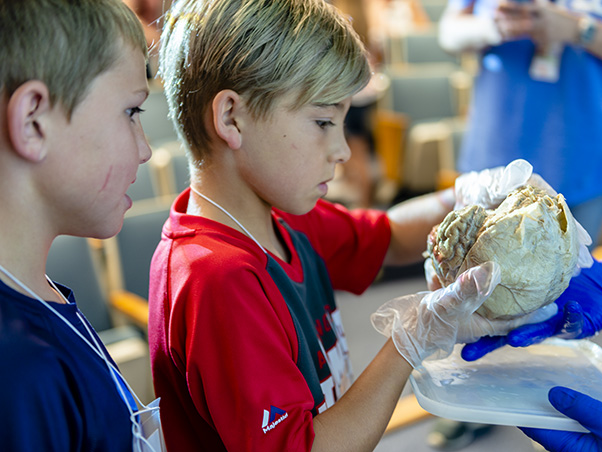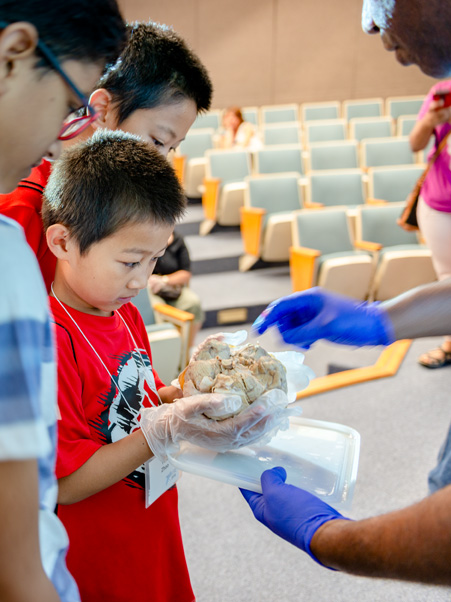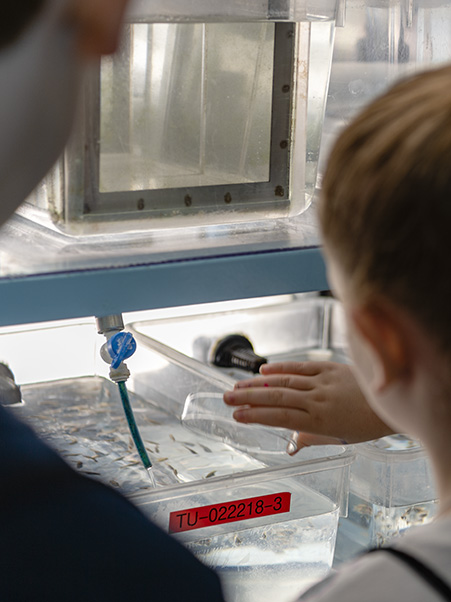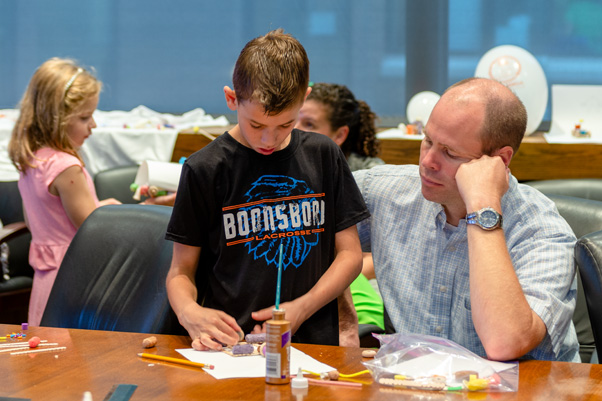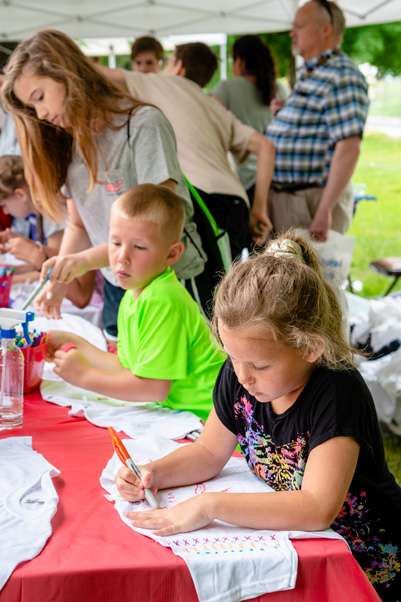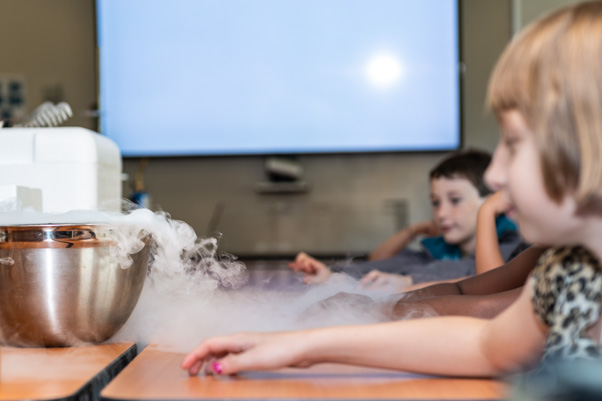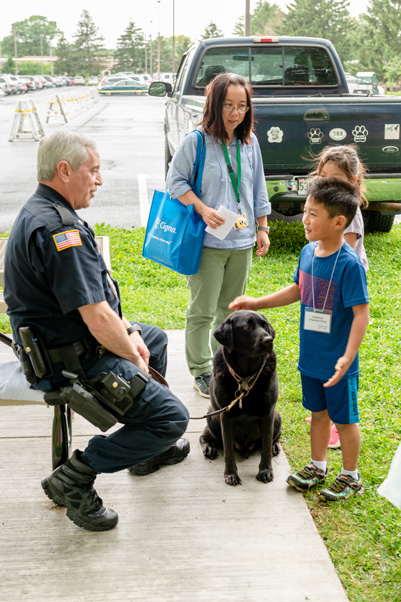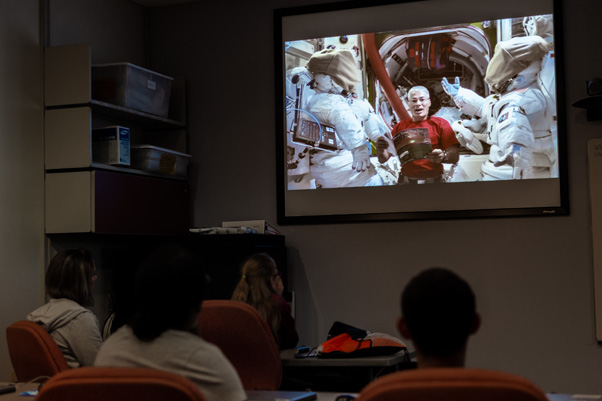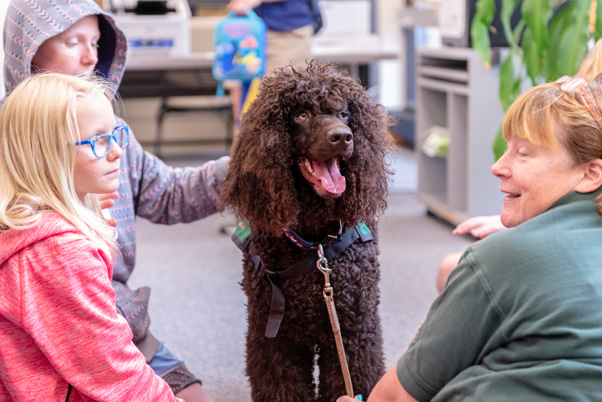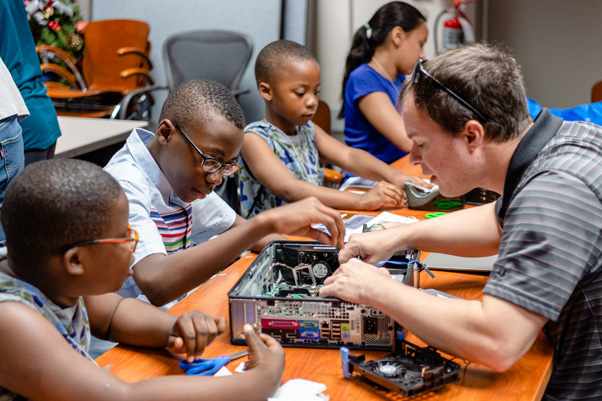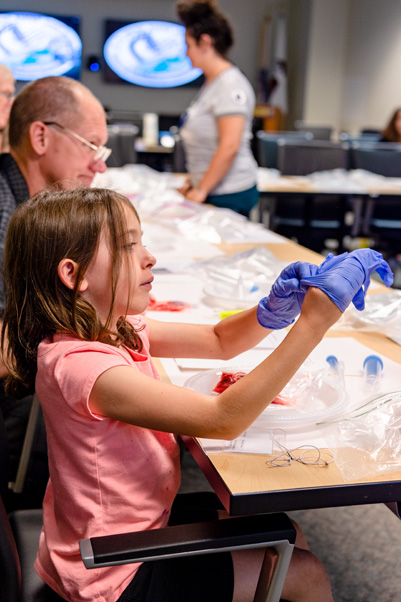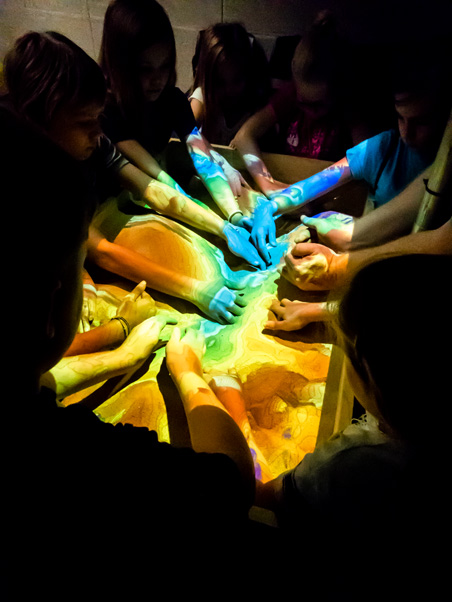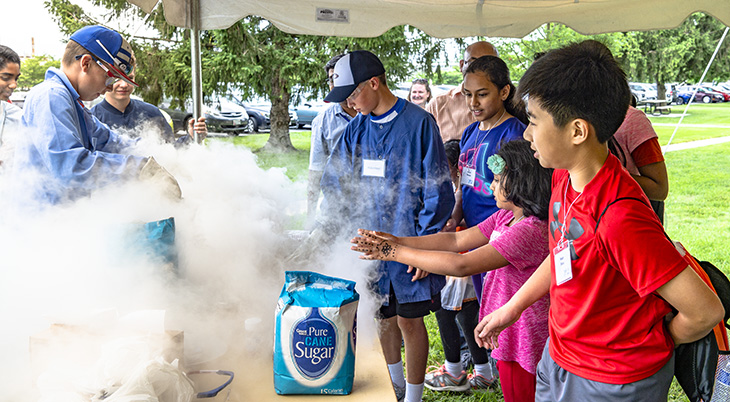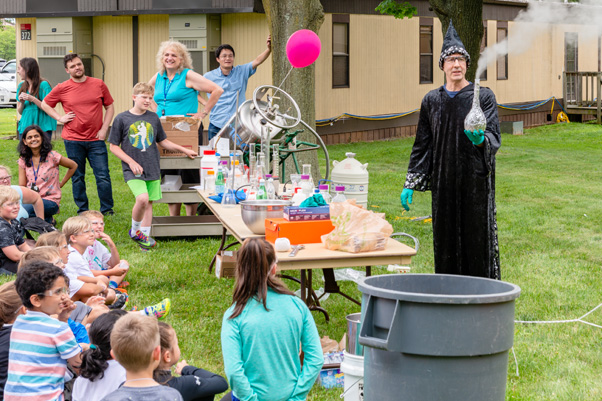Six-year-old Raylin Payne sprang into action as digital flames crackled to life on a display monitor eight feet away: after pulling a nearby fire alarm, he called 9-1-1 and grabbed a digital fire extinguisher to battle the simulated blaze. When the last of the embers had died away, his score for the R.A.C.E. emergency notification simulator appeared on the screen—a swift 58.5 seconds.
Firefighting was just one of many adventures that Payne and approximately 260 other children enjoyed during this year’s NCI at Frederick Take Your Child to Work Day. The event played host to 29 fun-filled programs and activities that ranged from an augmented-reality sandbox to computer-controlled laboratory robots.
Take Your Child to Work Day aims to stimulate children’s interest in science through fun and educational activities, and if high attendance and volunteer participation are any indication, this year was especially promising.
“We had a great event again this year with a large turnout,” said Marsha Nelson-Duncan, education outreach specialist, Office of Scientific Operations, NCI at Frederick. “We would like to thank everyone who contributed to this year's Take Your Child to Work Day.”
Children like Payne spent the day learning about blood types to solve a fictional crime scene, playing with laboratory mice, and making slime. He even got to hold a human brain during a program by the National Museum of Health and Medicine.
“I had fun,” Payne said.
Elsewhere, children were having an equally enjoyable and hands-on experience. At the “Fish and Frogs” program sponsored by the U.S. Army Center for Environmental Health Research, siblings Wyatt and Madison Taulton got an up-close look at zebrafish, bluegills, and African clawed frogs while learning about their biology and roles in environmental research.
Madison even had the chance to feed some of the juvenile zebrafish their regular meal of worms, which was her favorite part of the program. For his part, Wyatt enjoyed “looking at the little worms squirming all around” under the microscope.
There were also plenty of ways for children to express their creativity while learning. Participants in the “You Can Build It” program crafted their own medical equipment for soldiers, while “Art Through Science” offered kids a chance to make tie-dye t-shirts using permanent markers and rubbing alcohol.
Many programs, including the enduring favorite “Fire and Ice,” captivated children and parents alike with displays of science in action. Host William “BJ” Bosche, research associate III, AIDS and Cancer Virus Program, taught his audience that objects behave differently when exposed to heat and cold, a lesson he reinforced through dazzling demonstrations of colorful burning gasses and flash-frozen household objects.
When the time came for much-needed rest, children and their parents could enjoy liquid nitrogen ice cream or watch a National Institutes of Health police dog demonstrate its bomb-detection skills by sniffing out a bag of fireworks.
The Scientific Library offered similarly soothing activities: kids could watch an astronaut on the International Space Station read them a story or find a new book at the children’s book swap. They could also read their new books aloud to Skiff, a two-year-old Irish Water Spaniel, to practice their reading skills and build confidence.
The day concluded with a chemistry-based magic show, hosted by Joe Barchi, Ph.D., senior scientist and head of the Chemical Biology Laboratory, who dressed the part in a pointed hat, wizard’s robe, and safety glasses. Barchi quickly delighted the audience by “conjuring a genie” from a flask wrapped in tin foil, and he spent the next hour surprising them with other feats of “magic,” such as changing a liquid’s color with laboratory equipment, transforming a liquid into a solid block of carbon, and causing a miniature snowstorm with dry ice.
After the show, exhausted parents and their children began to depart. Some children, still full of energy, could be heard chatting excitedly about the day—and about science.



